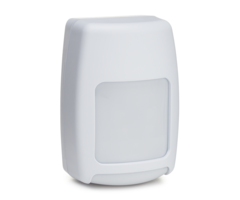Honeywell 5800 Motion Detectors


If you have a Honeywell or 2GIG Wireless Panel and you need a reliable and trustworthy motion detecting sensor, then the Honeywell 5800 Motion Sensors are great devices to consider. These are versatile and effective sensors that can enroll with nearly any 345 MHz alarm control panel. This primarily includes Honeywell and 2GIG Systems. They will even work with the 345 MHz version of the Qolsys IQ Panel 2 Plus. This makes the Honeywell 5800 Motion Sensors some of the easiest to use wireless motion detectors on the market today.
One of the best aspects of the Honeywell 5800 Motion Detectors is just how easy they are to enroll. All you have to do is put the panel into its wireless enrollment mode and then fault the sensor three (3) times to auto-enroll. Some panels may allow for auto-enrollment after a single fault, but most of the Honeywell Systems follow the three fault rule. You will then be able to configure the zone settings based on your needs. This includes providing a name for the zone and setting how the system will respond when the sensor is activated.
There are four (4) main passive infrared (PIR) motion sensors within the Honeywell 5800 Motion Detector lineup. These are the 5800PIR, the 5800PIR-RES, the 5800PIR-COM, and the 5800PIR-OD. The 5800PIR-RES is the standard Honeywell 5800 Motion Sensor, and it is specifically built for residential use. The 5800PIR is basically the same as the 5800PIR-RES, but the 5800PIR adds a tamper cover and an low-temperature sensor. The 5800PIR-COM is more robust sensor, and it has a much larger detection area that makes it suitable for commercial locations. Finally, the 5800PIR-OD is built for outdoor use.
It is also useful to understand how passive infrared motion sensors work. These sensors look for the changes in infrared energy that occur with movement. Every person and object gives off a small amount of infrared energy. A PIR motion sensor is actually able to detect the change in IR energy that occurs when a new person or object comes within the sensor's field of view. To prevent false alarms, many motion sensors will allow you to adjust the device sensitivity. Setting your motion sensor to a lower sensitivity may make false alarms less likely to occur.
Finally, some of the Honeywell 5800 Motion Detectors utilize pet-immunity. This means that the motion sensor will not look in the areas where pets would be moving close to the ground. Instead, the motion sensor will only look in the areas where a human would be walking upright. For best results, you should avoid mounting the motion sensor in an area where a pet may be able to get within the sensor's field of view. For example, if you have your Honeywell 5800 Motion Sensor facing some furniture or a stairway, then your pet may be able to climb it and get within the detection range to activate the sensor.




